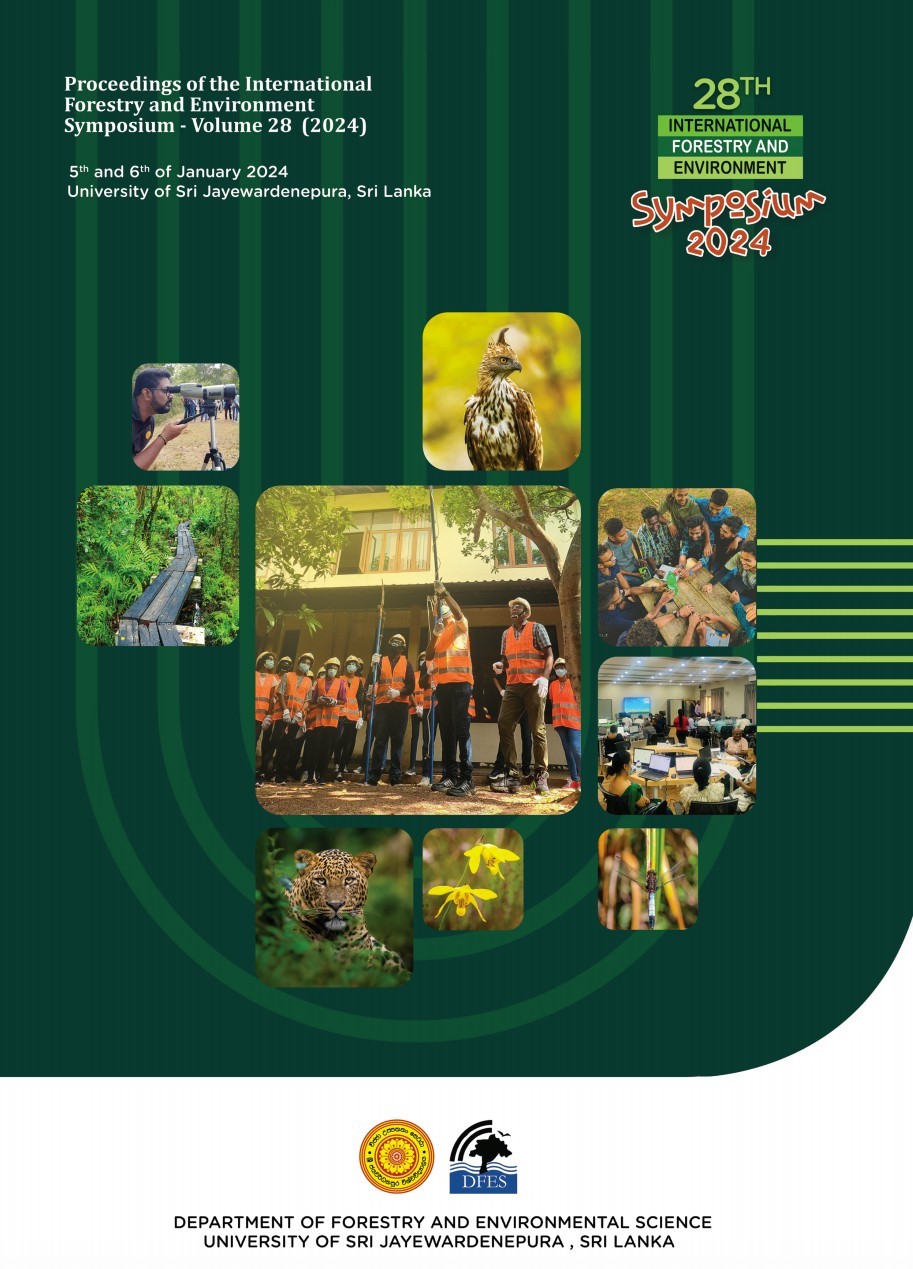Determining the Uncertainty of Changing Onsets of Major Crop Growing Seasons in Sri Lanka: A Spatial-Temporal Modelling Approach
DOI:
https://doi.org/10.31357/fesympo.v28.7003Abstract
Agriculture globally faces a serious threat from climate change, with Sri Lanka being especially vulnerable. The nation's rich agricultural culture is in risk because of its heavy reliance on rice cultivation. To overcome these challenges and increase agricultural output, it is critical to understand how climate change affects growing seasons and thus changes in crop management. The main objective of this study was to assess long-term changes of the onset of major crop-growing seasons in Sri Lanka in time and space. The specific objective is to identify vulnerable areas with respect to changes in crop-growing seasons in Sri Lanka. The study utilized a dataset over 47-years that included daily rainfall data gathered from 22 agro-meteorological stations. The dataset was divided into two distinct data sets: the base period (1976-2000) and the second period (2001-2022). To determine the best-fitting probability distributions, onset weeks were fitted with four different probability distributions: Gaussian, gamma, Weibull, and exponential. Then, using statistical indicators such the Akaike information criterion (AIC), Bayesian information criterion (BIC), and goodness of fit, a best-fit probability distribution was identified. The parameter estimation for early onset and late onset followed afterwards. The spatial variance in the onset of growing seasons was further interpolated and visualized using the acquired probability values. This comprehensive technique gave an in-depth understanding of the effects of climate change on agriculture in Sri Lanka. Significant inter-period variations in the probability of early and late onsets throughout the Maha and Yala seasons were found in the study across several Sri Lankan locations. The probability of early and late onsets varied noticeably; in the base period, certain areas were more likely to experience early onsets, whereas the Dry Zone was more likely to experience late onsets. Furthermore, in the second period, the Dry Zone showed increased likelihoods of early onsets during the Yala season. The study highlighted differences in late onsets' occurrences both temporally and spatially during both Yala and Maha seasons. Therefore, the study highlights the impact of climate change on agriculture in Sri Lanka, specifically in terms of changes in the onset of growing seasons, and the need for farmers to adapt their cultivation practices and select suitable crop varieties to optimize crop growth and yield accordingly.
Keywords: Maha, Onset, Probability distribution, Spatial variation, Yala



